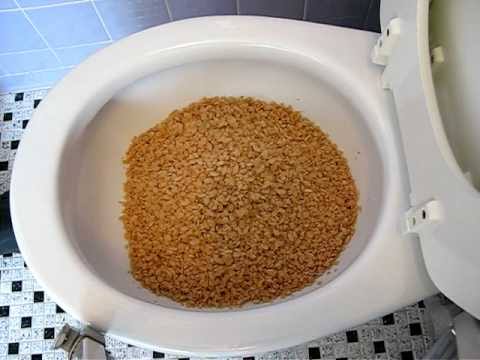Can One to Flush Food in the Toilet?
Can One to Flush Food in the Toilet?
Blog Article
Each person seems to have his or her own assumption about Is it safe to flush food (especially rice) down the toilet?.

Introduction
Many people are commonly faced with the predicament of what to do with food waste, specifically when it involves leftovers or scraps. One typical inquiry that develops is whether it's alright to purge food down the commode. In this post, we'll delve into the reasons that people could think about flushing food, the effects of doing so, and different approaches for appropriate disposal.
Reasons why people may take into consideration purging food
Lack of recognition
Some individuals may not be aware of the prospective damage brought on by purging food down the toilet. They might incorrectly believe that it's a harmless practice.
Convenience
Flushing food down the toilet might seem like a fast and simple service to dealing with unwanted scraps, specifically when there's no close-by trash can available.
Idleness
In some cases, individuals may just pick to flush food out of large laziness, without thinking about the consequences of their actions.
Effects of flushing food down the toilet
Environmental influence
Food waste that ends up in rivers can add to pollution and damage water environments. Additionally, the water made use of to flush food can strain water resources.
Pipes issues
Purging food can result in clogged pipes and drains, causing expensive plumbing repair services and troubles.
Types of food that should not be purged
Coarse foods
Foods with fibrous textures such as celery or corn husks can obtain entangled in pipes and cause obstructions.
Starchy foods
Starchy foods like pasta and rice can soak up water and swell, leading to clogs in pipes.
Oils and fats
Greasy foods like bacon or cooking oils should never be purged down the toilet as they can strengthen and cause obstructions.
Correct disposal approaches for food waste
Using a garbage disposal
For homes furnished with waste disposal unit, food scraps can be ground up and flushed with the pipes system. However, not all foods are suitable for disposal in this fashion.
Recycling
Specific food product packaging products can be recycled, decreasing waste and lessening environmental impact.
Composting
Composting is a green means to throw away food waste. Organic materials can be composted and made use of to enhance dirt for gardening.
The value of proper waste monitoring
Minimizing ecological harm
Appropriate waste management practices, such as composting and recycling, aid reduce air pollution and maintain natural resources for future generations.
Securing pipes systems
By preventing the technique of flushing food down the commode, property owners can stop pricey pipes fixings and preserve the stability of their plumbing systems.
Conclusion
Finally, while it may be appealing to purge food down the bathroom for comfort, it is necessary to recognize the prospective repercussions of this activity. By adopting appropriate waste administration practices and getting rid of food waste sensibly, individuals can add to much healthier pipes systems and a cleaner setting for all.
FLUSH FOOD DOWN THE TOILET?
FLUSHING FOOD CAN CAUSE BLOCKED DRAINS IN YOUR HOME
All of the plumbing fixtures in your home are connected to the same sewer pipe outside of your home. This outdoor sewer pipe is responsible for transporting all the wastewater from your home to the Council sewer mains. Even small pieces of food that go down the kitchen sink can cause problems for your sewer. It should therefore be obvious that flushing larger bits of food, such as meat, risks a clog in either the toilet itself or the sewer pipes. Flushing greasy food is even more problematic because oil coagulates when it cools, coating the interior lining of your pipes.
THE TOILET IS NOT A BIN
Food isn’t the only thing that people shouldn’t be flushing down the toilet. People use the toilet to dispose of all kinds of things such as tampons, makeup wipes, dental floss, kitty litter and even underwear. Water goes to great lengths to educate residents about the high costs and stress placed on wastewater treatment systems simply from people flushing the wrong stuff down the toilet. It costs taxpayers millions of dollars each year, and homeowners thousands in blocked drain repairs.
FLUSHING FOOD IS A WASTE OF WATER
Flushing food is a waste of our most precious resource - water. In June this year Level 1 water restrictions were introduced to protect water supply from drought conditions. Much of New South Wales continues to be affected by prolonged drought with recent figures revealing up to 97 per cent of the state remains in drought. Depending on whether you have a single or dual flush toilet, every single flush uses between five and 11 litres of water. In the current climate this is a huge amount of water to be wasting on flushing food that should be placed in the bin (or better yet, the compost).
https://www.jabplumbingsolutions.com.au/blog/can-you-flush-food-down-the-toilet

Do you really like reading about ? Post a review down the page. We will be glad to see your thoughts about this posting. We hope that you come back again in the future. Liked our content? Please quickly share it. Let others check it out. I treasure your readership.
Book Report this page